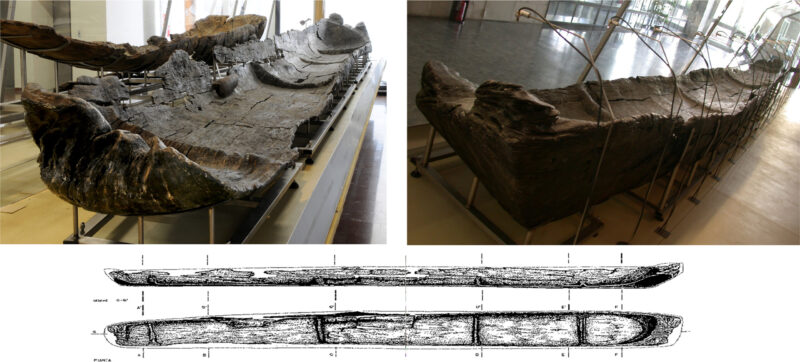Five canoes found at the bottom of an Italian lake date back 7,000 years. The ancient craft have lain there since the early Neolithic period.
They are the oldest canoes ever found in the Mediterranean region, where wreckage also includes the famous Bronze Age Uluburun.
Researchers recovered the boats from La Marmotta archaeological site near Rome. Pipe layers stumbled across it by accident in 1989 while working near the Arrone River, about 37km from the Mediterranean coast.
Despite excavations between 1992 to 2009, few researchers knew about the canoes. No in-depth study on them had occurred. A new team, fascinated by the canoes’ place in seafaring history, decided to take a closer look.
Location of La Marmotta on the Italian peninsula. Image: Gibaja et al., PLOS ONE, 2024
Different woods for different boats
It turns out that the wooden boats were far more sophisticated than they had imagined. Creating them with the rudimentary tools of the era would have been a considerable feat. Their structure suggested that they served for both long and short trading journeys in the Mediterranean.
In 1998, an earlier team created a replica of one of the dugout canoes. They paddled 800km in it, averaging almost 50km a day in good conditions. Experienced seafarers of the Neolithic could have covered even larger distances with ease.
These ancient mariners built their craft from hollowed-out trees, specifically alder, poplar, oak, lime, and beech. The use of different woods for each boat at the same site is unusual. Each wood had different properties that made them useful for different tasks. Researchers are confident that the use of different woods was intentional.
“These people were working wood with the same knowledge as a carpenter today, just with different tools,” co-author Niccolo Mazzucco told New Scientist.
The canoes vary in size from 4 to 11 meters long. The smaller ones likely served for fishing. The biggest one, made from oak, is far larger than necessary to cross Lake Bacciano, where the site is located. This suggests that it was built for longer journeys around the Mediterranean.

Canoe Marmotta 1. From a display in the Museo delle Civiltà in Rome. Photo: Gibaja et al., PLOS ONE, 2024
Sailing attachments?
The researchers were particularly excited about wooden T-shaped objects embedded into the walls of the canoe. They have two or four holes in them as attachments points for tow ropes or a sail.
Over the years, researchers have also uncovered pottery, paints, harvesting tools, and grains. La Marmotta was clearly a successful farming community, and must have been an important trade location.
Communities from this time used waterways for trade and communication, but how they did so has always been a mystery. Much of their equipment has disappeared. But the La Marmotta canoes show just how sophisticated seafaring was, even in the Neolithic era.
Their artisans knew how to choose the best trees, how to cut the trunk and hollow it by burning out its middle, and how to stabilize the dugout with transverse reinforcements or perhaps by using side poles or even parallel canoes to create a catamaran.
“Those strategies would have provided greater safety and stability, and greater capacity for the transport of people, animals and goods,” the researchers explained.
